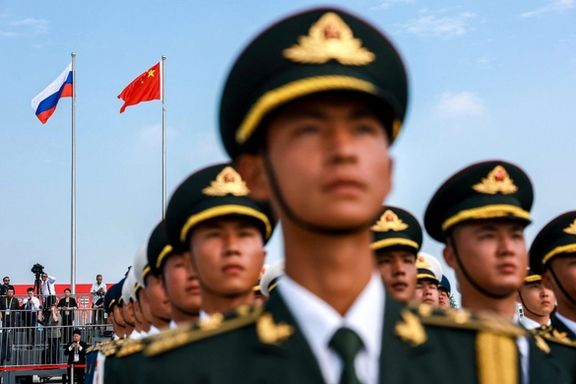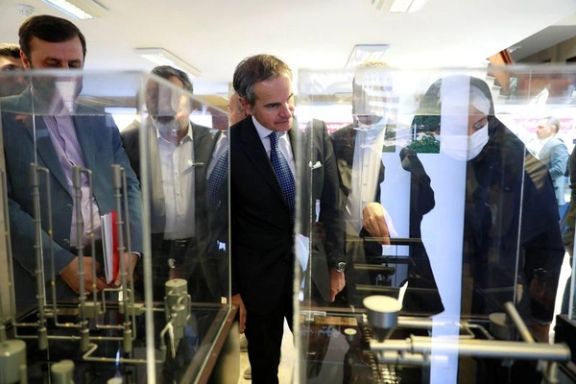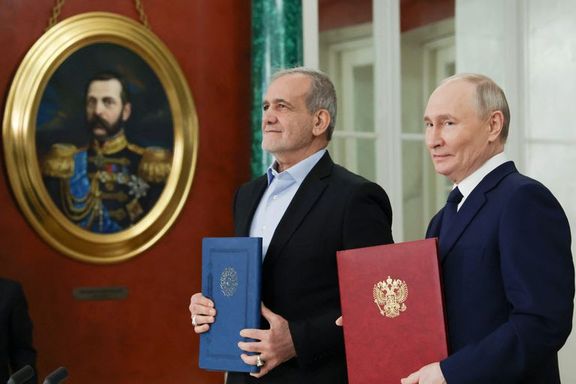Lifeline or dead end? Iran turns East as West closes in

Tehran’s sharpening nuclear clash with the West and embrace of Beijing and Moscow have brought it to a crossroads, where choices this month may decide the future of Iran’s rulers and the ruled.

Tehran’s sharpening nuclear clash with the West and embrace of Beijing and Moscow have brought it to a crossroads, where choices this month may decide the future of Iran’s rulers and the ruled.
The formal start of the UN “snapback” process to restore sanctions, the latest critical report by the International Atomic Energy Agency (IAEA), and President Masoud Pezeshkian’s high-visibility diplomacy at the Shanghai Cooperation Organization (SCO) summit together mark a decisive moment for Tehran.
The most immediate challenge is the likely restoration of UN snapback sanctions before 28 September.
European governments argue the trigger is Iran’s sustained non-compliance with key limits in the 2015 Joint Comprehensive Plan of Action (JCPOA) over the past six years. Tehran rejects that position, insisting the E3 forfeited standing by failing to deliver promised economic normalization after Washington’s 2018 withdrawal.
Whatever the legal briefs, reinstated measures would effectively return Iran to a Chapter VII-related sanctions framework, with all the familiar consequences: renewed constraints on arms transfers, reinforced financial isolation, and fresh layers of economic restrictions that have already strained household incomes and the broader investment climate.
Scrutiny intensifies
New IAEA findings have sharpened scrutiny of Iran’s program.
The agency signaled fresh shortfalls in cooperation, pointing to unexplained inventories of enriched uranium at levels exceeding JCPOA caps.

A confidential tally circulated to member states indicated Iran holds about 441 kilograms of uranium enriched to 20% or higher – enough, by the agency’s rule of thumb, to yield material for around ten nuclear devices if further refined.
Director General Rafael Grossi has said there is no sign of diversion, but emphasized the need for verification and timely documentation – something Iranian officials have yet to provide.
Rather than escalate immediately, the Secretariat has kept contacts open in hopes of restoring routine access. Two reports to the IAEA’s 35-nation Board of Governors underline the urgency: inspections must resume “without delay,” and the buildup of highly enriched stocks remains a “serious concern.”
Eastward turn accelerates
It is against this tightening sanctions and verification backdrop that President Pezeshkian’s China tour looms large.
Over a week of meetings – most prominently with Xi Jinping in Beijing and Vladimir Putin in Tianjin – Tehran sought to translate a long-advertised “Look East” doctrine into concrete political and economic ballast.
Iranian officials pressed for more than sympathetic rhetoric: Moscow and Beijing are backing Iran’s claim that snapback is legally void but, crucially, Tehran hopes they avoid implementing any reimposed UN measures.
For China and Russia, the ask is non-trivial. Skirting U.S. and European unilateral sanctions is one thing; openly discounting UN obligations is another, with implications for their global positioning.

Still, Pezeshkian delivered a message calibrated for both audiences at once.
He reaffirmed Iran as a “reliable friend” to China, echoing Supreme Leader Ali Khamenei’s priority on eastern partnerships. He also stressed Tehran’s readiness to operationalize the 25-year agreement with Beijing across energy, infrastructure, and technology.
The session with Putin amplified the signal: in Tehran’s view, China and Russia are no longer transactional partners of convenience, but strategic anchors to confront Western pressures.
Roadblocks remain
The SCO summit in Tianjin provided the showcase for this reorientation. Now a full member, Iran leaned into the organization’s language of sovereignty, non-interference, and resistance to unilateralism.
Yet the question of deliverables hangs over the pageantry.
Iran’s earlier eastward experiments, notably under Mahmoud Ahmadinejad, yielded less than the rhetoric promised. Banking bottlenecks, compliance risks for major companies, and the gravitational pull of Western markets on Chinese firms limited follow-through.
Whether today’s geopolitical alignment—and the higher stakes of great-power competition—change those cost-benefit calculations is the live test.
For Tehran, success will be measured not in communiqués but in sustained energy sales, credible financing channels, technology transfers, and visible progress on infrastructure that can withstand sanctions headwinds.

Future hangs in balance
Inside Iran, the “Look East” pivot has sparked an energetic debate.
Hardline outlets herald the emergence of an “Eastern front” that validates decades of resistance to Western dominance. But reformist and moderate voices warn that the country risks swapping one form of dependence for another.
Their critique is less civilizational and more structural: if Iran becomes overly reliant on Moscow and Beijing for markets, capital, and diplomatic cover, it could re-create the asymmetries of influence that the 1979 Revolution sought to overturn.
In this reading, the pivot is a pragmatic hedge, but also a bargain that may constrain policy autonomy over time.
The central uncertainty is whether the “Look East” approach can move beyond symbolism and episodic deals to furnish the durable economic and technological lifelines Iran needs.
If it can, Tehran may blunt the effect of renewed UN measures and stabilize growth on an alternative platform. If it cannot, the pivot risks devolving into a slogan that masks deepening isolation and narrowing options.
As September advances toward the snapback deadline, Tehran stands at a genuine crossroads.
Choices made now – on access for inspectors, on the pace and level of enrichment, on the specificity of commitments with China and Russia – will shape not only Iran’s nuclear trajectory and economic survival, but also the character of its grand strategy for the remainder of Khamenei’s tenure.